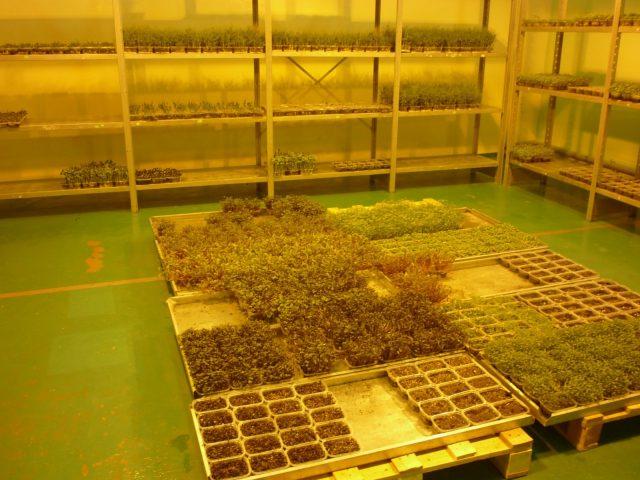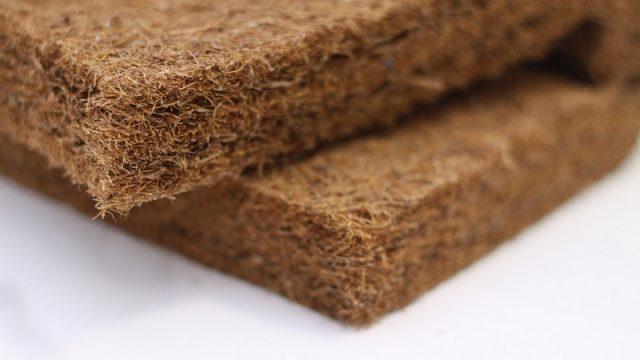Content
Growing microgreens on a mat has become very popular in the last few years. Now this is easy to do even in an ordinary apartment, with a minimum of agrotechnical knowledge and experience. The product is very healthy, low-calorie, often used by supporters of a healthy diet and included in restaurant recipes. Regular consumption of microgreens helps strengthen the immune system and improve health.

At home, microgreens are grown using a special mat
What it is
Ready-made microgreens are sprouted sprouts of herbs, vegetables and legumes, collected in the phase of the first pair of true leaves. The product is now widely available in health food stores and is also found on the shelves of some large supermarkets. It is a storehouse of plant hormones and growth stimulants, has a low calorie content, has a beneficial effect on digestion, and is easily digestible.Substances contained in sprouts help cell regeneration, reduce cravings for sweets, and lower cholesterol levels. The main advantage of the product is its entirely natural composition, without chemicals, and the presence in it of a maximum concentration of vitamins, macro- and microelements.
Microgreens are obtained by germinating cereals or root vegetables, usually beets, peas, arugula, buckwheat, soybeans, basil, and daikon. The technology is available to everyone; planting requires a minimum of tools:
- seeds of necessary plants;
- germination mat;
- plastic container with lid.

The process of growing on special mats ensures that there are no traces of soil on the microgreens
Advantages and disadvantages
Growing microgreens on a mat at home has many advantages, and if we talk about disadvantages, they are practically absent.

Sprouts sprouted yourself are much healthier than store-bought ones.
Pros:
- ease of cultivation;
- year-round productivity;
- purity of greenery;
- high benefit of the product;
- lack of contact with the ground.
Minuses:
- cost of planting material.
Varieties
For those who are going to start growing microgreens, a special mat will be a real salvation. It is a substrate that is designed to fix seeds, retain moisture and create conditions for the proper development of the root system of sprouts. Their assortment is quite large, but, judging by experts, it is best to grow microgreens on a felt mat, jute, linen or coconut.Each of these materials has its own advantages and disadvantages, which the gardener must take into account when choosing.

Typically, all rugs, with the exception of coconut, are sold in pieces with dimensions of 16 by 11 cm
Linen mat for sprouting microgreens
Substrate made from plant materials such as flax is popular among gardeners because it is not particularly difficult to find on sale. It is a non-woven fabric, has no disadvantages and has the following advantages:
- ability to retain moisture well;
- affordable price;
- preventing the development of fungus and mold;
- creating suitable conditions for seed germination and development.

The linen rug does not stain the greens at all
Jute mat for sprouting microgreens
Planting microgreens on a jute mat is also easy. It, like flax, has no disadvantages; it is made from plant material - bast fiber (jute hay). This substrate has no dust or foreign odors, provides good air flow to the roots, and retains four times more moisture than its own weight.
Thanks to a jute mat for microgreens with your own hands, you can grow a succulent crop on the windowsill even in winter. Supermarkets usually sell sets made from this material.

Jute mat can be used twice
Coconut mat for growing microgreens
Another natural and eco-friendly material where you can grow microgreens is a coconut mat. It creates an optimal environment for the development of the root system of sprouts, it provides high density, is able to absorb moisture, and has good aeration.When the seeds begin to sprout, the pile of the mat does not rise. In addition, it has its own microflora, which prevents the occurrence of putrefactive processes, and due to the fact that special solutions are used in its production, additional feeding is not required when growing microgreens on it.

A coconut mat can only be used once and is more expensive than linen or jute.
Felt for microgreens
Felt support for microgreens is also considered very popular. This material is inexpensive, has an organic base, perfectly retains moisture throughout the growth of the crop, and ensures air circulation to the roots. In addition, the distribution of microgreen seeds on the felt mat occurs evenly, and it is also possible to germinate crops with different germination periods on it at the same time.

A felt mat for germinating microgreens is used several times
Which substrate to choose
When choosing the material from which a mat for microgreens will be made, it is recommended to take into account its cost-effectiveness, as well as pay attention to aeration, environmental friendliness and moisture-holding capacity. There are entire growing kits on sale that are cheaper than just substrates. The most affordable options are mats made of flax and felt, and the most expensive is a coconut mat, which is usually sold by linear meters in rolls.
How to use microgreen mats
Although the choice of backing material is usually influenced by personal preference, the rules for using each of them are not much different. All mats are united by simplicity and environmental friendliness.
The sequence of actions for using the mat is as follows:
- Place the material in a plastic container in which microgreens will be germinated.
- It is good to water it with filtered water and wait until it is absorbed. If there is excess liquid in the container, it must be drained.
- Spread the microgreen seeds evenly over the surface of the mat.
- Cover the container with a transparent lid or film.
- Place the container on a bright windowsill.
- After germination, remove the lid.
- Cut off the sprouts when they have two leaves.
Several types of plants can be grown on the substrate at the same time. If you sow them at different times, the harvest can be extended. It is recommended to store cut microgreens in the refrigerator, but no more than a week, without losing their beneficial properties.
How many times can you use a microgreens mat?
Often people who want to start growing microgreens, when choosing a mat, are guided by the frequency of its use. For example, it is not advisable to use a linen backing a second time, since there is a risk of mold infection. It is better to take a new rug each time. The same goes for the coconut substrate. Despite its high price, it is used once. If the mat is made of jute, then it can be used twice. Only before reuse should it be completely cleaned and dried. As for felt, it is the most economical and can be used up to four times.

Mats for microgreens accelerate seed germination and improve their germination rate
Conclusion
Growing microgreens on a mat at home is convenient and easy. This is a great idea that many housewives have already appreciated. The process is fascinating; you can watch how microgreens grow with your children. Thanks to the special substrate, there is no need to maintain the beds and the greenery always remains clean. If you place seeds of different types of crops on the mat at intervals of several days, you will always have greens in your diet.
Reviews of mats for microgreens








